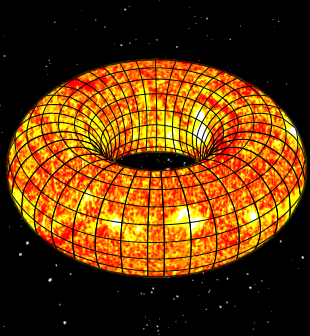Fusion build to power young minds
 Australian students will soon build their own nuclear fusion device.
Australian students will soon build their own nuclear fusion device.
The first ever nuclear fusion device to be wholly designed, built and operated by students is being planned for UNSW Sydney as part of a project headed up by nuclear engineering expert Dr Patrick Burr, which aims to have a working device operating within two to three years.
Thermonuclear fusion is a process where atomic nuclei are massively heated up, typically to 150-300 million degrees Celsius, and then fused together under substantial force, releasing a large amount of energy in the process.
It is the same process that powers the Sun and has the potential to provide clean and abundant energy on Earth if successfully harnessed.
Fusion energy is one of the fastest growing energy sectors globally, and there is considerable work going on around the world to harness fusion as a future clean energy resource.
Fusion is the opposite reaction of nuclear fission, which powers conventional nuclear power plants.
Instead of breaking up heavy elements like uranium, it fuses together light elements that are abundant on our planet, like hydrogen, or boron. The process does not rely on a chain reaction, and the by-product is helium, an inert gas and also a valuable resource.
Unfortunately, creating and maintaining the extreme conditions of heat and pressure required for atomic nuclei to overcome their natural repulsion and fuse together is very challenging.
UNSW’s first fusion-capable machine will be 'tokamak', a doughnut-shaped vacuum chamber with powerful magnets to control and heat streams of plasma to extreme temperatures, at which point nuclear fusion is possible.
This will potentially be followed by other devices that could achieve fusion using different methods, such as high-power lasers.
The program is being supported by industry partners Tokamak Energy and HB-11 Energy.
“The students involved in this project will have to develop solutions to big engineering challenges, work closely with industry partners, and push the boundaries of what is possible with fusion energy,” Dr Burr said.
"They will have to master skills that are also highly-sought after in other industries, like safety-critical infrastructure, transportation, outer space, and of course conventional nuclear technologies.”
Many research universities around the world, including those in Japan, South Korea, Switzerland, Turkey and USA, already operate traditional fission reactors for training of nuclear engineers, materials testing, or the production of radioisotopes for medicine and industry.
Fusion is widely considered to be inherently safe since the process is not based on a chain reaction, as is the case with nuclear fission.
“It can be seen as an energy amplifier, rather than an energy generator, so when you turn off the switch there is nothing to amplify and the device shuts down, just like a light-bulb,” said Dr Burr.
Although the project aims to create a fusion-capable machine, there is no intention to actually attempt to fuse hydrogen once it is built.
“Scientists have spent decades doing fusion experiments to understand what is required to achieve fusion, even for just a period of nanoseconds,” Dr Burr added.
“Now that we understand that, we are left with the engineering challenge of how to sustain those extreme conditions for hours or even days at a time.
“We don’t need to do fusion to answer that, we just need to maintain a plasma of a few million degrees Celsius, without breaking down any of the sensitive components around it.”
Therefore, the student-built device will be operated without introducing any fuel that can actually create a fusion reaction.
Even so, the UNSW team will also work closely with the Australian Radiation Protection and Nuclear Safety Agency (ARPANSA) and the Australian Safeguards and Non-Proliferation Office (ASNO), to ensure the project remains compliant with all regulations.
The reactor will be built as part of the university’s Vertically Integrated Projects (VIP) scheme.







 Print
Print